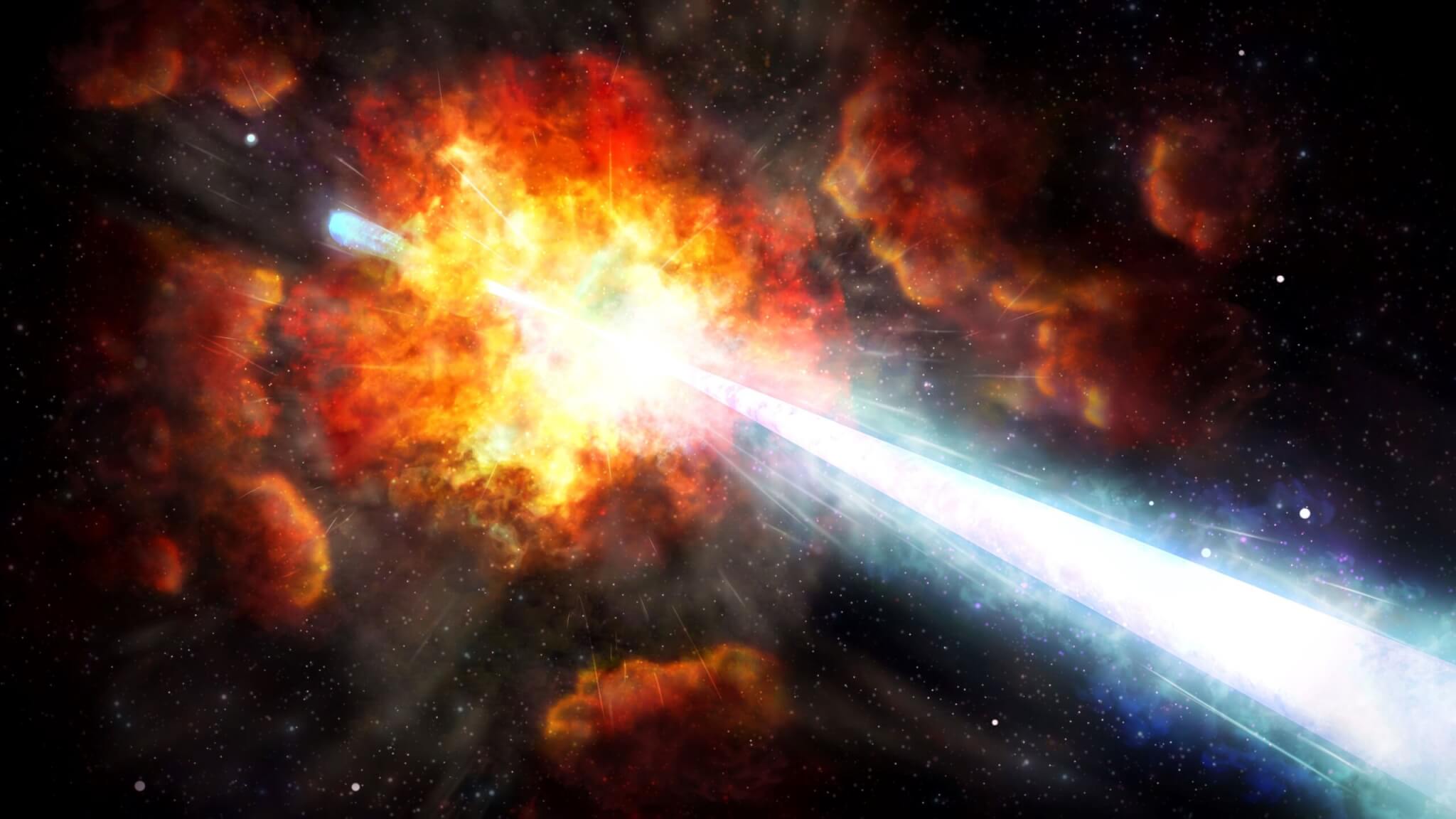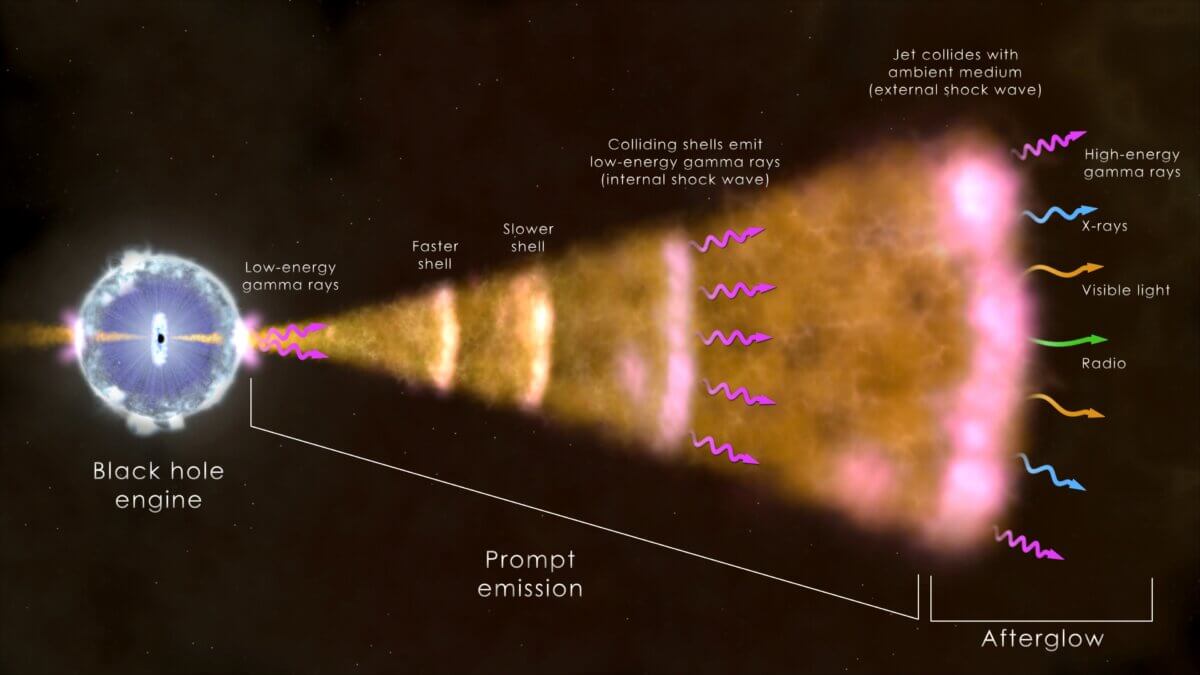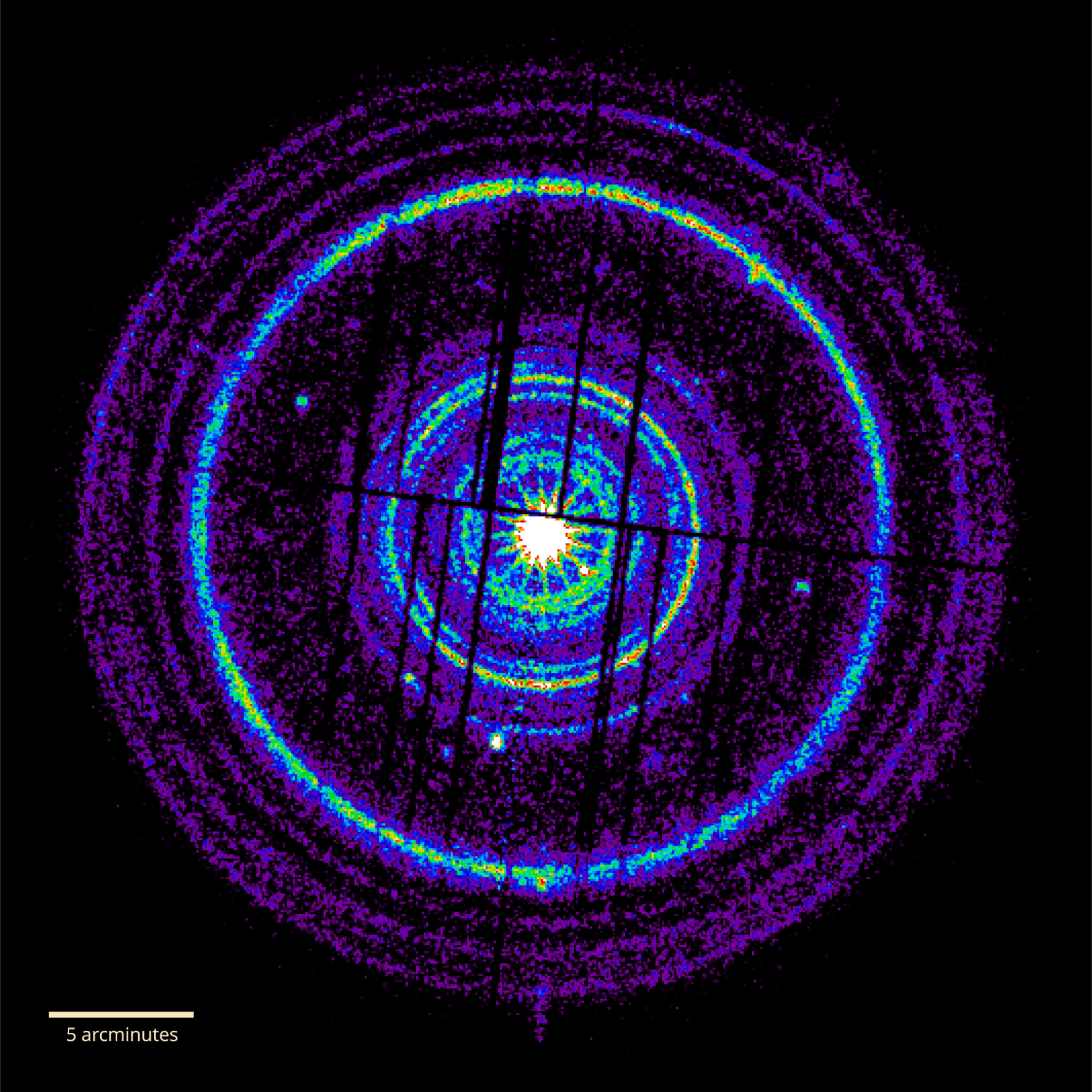
Illustration of the brightest GRB 221009A. Image by IHEP/HXMT&GECAM Team
GREENBELT, Md. — Forget being the “GOAT,” astronomers are calling an unprecedented burst in space the “BOAT” – the brightest of all time. Scientists are studying what may be a 1-in-10,000 gamma-ray burst (GRB), the most powerful class of explosion in the universe.
NASA says on Oct. 9, 2022, a pulse of intense radiation swept through the solar system that was so exceptional, astronomers quickly declared that it was the brightest ever seen. The burst was so bright, it effectively blinded most gamma-ray instruments in space. This means they could not directly record the real intensity of the emission.
However, it triggered detectors on numerous spacecraft, with observatories around the globe following up. After combing through all of the data, astronomers can now characterize just how bright it was and better understand its scientific impact.
“GRB 221009A was likely the brightest burst at X-ray and gamma-ray energies to occur since human civilization began,” says Eric Burns, an assistant professor of physics and astronomy at Louisiana State University, in a NASA release.

Burns led an analysis of some 7,000 GRBs to establish how frequently events this bright occur. NASA’s Fermi Gamma-ray Space Telescope and the Russian Konus instrument on NASA’s Wind spacecraft detected most of these bursts. According to their results, this happens once in every 10,000 years.
U.S. scientists were able to reconstruct the blinded space gamma-ray instruments information from the Fermi data. They then compared the results with those from the Russian team working on Konus data and Chinese teams analyzing observations from the GECAM-C detector on their SATech-01 satellite and instruments on their Insight-HXMT observatory.
“Together, they prove the burst was 70 times brighter than any yet seen,” NASA reports.
The burst likely originated from a black hole
Observations of the burst span the scientific spectrum, from radio waves to gamma rays. The data on the BOAT comes from many NASA and partner missions, including the NICER X-ray telescope on the International Space Station, NASA’s NuSTAR observatory, and even Voyager 1 out in interstellar space.
Researchers believe the signal from GRB 221009A traveled for about 1.9 billion years before it reached Earth. Interestingly, this actually makes it one of the closest “long” GRBs, whose initial (or prompt) emission lasts more than two seconds.
Astronomers think these bursts represent the birth “cries” of black holes. These objects form when the cores of massive stars collapse under their own weight into a super-powerful gravitational force. As it quickly ingests the surrounding matter, the black hole blasts out jets in opposite directions, containing particles accelerated to near the speed of light. These jets pierce through the star, emitting X-rays and gamma rays as they stream back out into space.

Credit: NASA’s Goddard Space Flight Center
Astronomers are now searching for a special supernova
With this type of GRB, astronomers expect to discover a brightening supernova a few weeks later. So far, astronomers are still looking. One reason is that the GRB appeared in a part of the sky that’s just a few degrees above the plane of our own galaxy. This region contains a thick dust cloud that greatly dims incoming light.
“We cannot say conclusively that there is a supernova, which is surprising given the burst’s brightness,” says Andrew Levan, a professor of astrophysics at Radboud University in the Netherlands.
Since dust clouds become more transparent at infrared wavelengths, Levan led near and mid-infrared observations using NASA’s new James Webb Space Telescope – its first use for this kind of study. NASA is also using the Hubble Space Telescope in the search for this supernova.

“If it’s there, it’s very faint. We plan to keep looking,” Levan adds, “but it’s possible the entire star collapsed straight into the black hole instead of exploding.”
Additional Webb and Hubble observations should be coming within the next few months. As the jets continue to expand into material surrounding the doomed star, they produce a multiwavelength afterglow that gradually fades away.
Burns and other scientists presented the new findings about the BOAT at the High Energy Astrophysics Division meeting of the American Astronomical Society in Waikoloa, Hawaii. Papers describing the results appear in The Astrophysical Journal Letters.
South West News Service writer Dean Murray contributed to this report.









